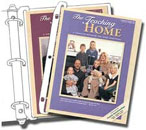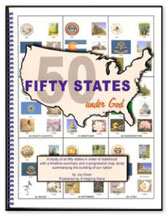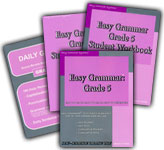Newsletter #373: Getting Your House in Order - Archived Online. Since 1980 The Teaching Home has provided families information, inspiration, and encouragement from a distinctively Christian perspective. Co-Editors: Veteran Homeschool Sisters, Sue Welch and Cindy Short |
||||||||
|
|
||||||||
Save $20 |
Don't Miss a Newsletter!
We trust that you find this newsletter informative and encouraging.
• See our archives of more than 200 newsletters online.
• To change your e-mail address, follow the "Update Profile / E-mail Address" link at the end of this e-mail.
• Add our e-mail address publisher@teachinghome.com to your address book, contact list, or safe list.
• If this issue has been forwarded to you, sign up to receive your own free subscription.
Your e-mail address will never be sold or given to anyone, ever!
|
The information, inspiration, and encouragement packed into each back issue never goes out of date. They are always relevant, applicable to your needs today. "The Teaching Home has been a part of my continuing education since I started homeschooling, and I have kept every issue. "I often go back to old issues to find creative, helpful hints or inspiration." A Topical Index of our last 39 issues (1994-2001) allows you to quickly put your finger on the articles you need. You can also use the search feature at the top of our store pages to find topics in all our issues and articles. |
Sunnyside Up

He Failed To-Get-It
Despite our phonics lessons, our 8-year-old liked to study his spelling words by breaking them down into smaller words he already knew.
When he had the word "together," he said, "Oh, that's easy! It's three little words: 'to-get-her.'"
I reminded him that the t and h were a single phonogram and shouldn't be separated. "It's still spelled the same," he assured me.
Imagine my surprise when I checked his spelling test and found the word "togetshe"!
Submitted Charlotte L., Texas.
Send your humorous anecdote to publisher@teachinghome.com.
Peace with God
1. God loves you.
For God so loved the world, that He gave His only begotten Son, that whoever believes in Him should not perish, but have eternal life. (John 3:16)
2. Man is separated from God by sin.
For all have sinned and fall short of the glory of God. (Rom. 3:23) For the wages of sin is death. (Rom. 6:23)
3. The death of Jesus Christ in our place is God's only provision for man's sin.
He (Jesus Christ) was delivered over to death for our sins and was raised to life for our justification. (Romans 4:25)
4. We must personally receive Jesus Christ as Savior and Lord.
But as many as received Him, to them He gave the right to become children of God, even to those who believe in His name. (John 1:12)
For by grace you have been saved through faith; and that not of yourselves, it is the gift of God; not as a result of works, that no one should boast. (Eph. 2:8, 9)
God's Word
Immerse your family in God's truth through systematic reading and study of God's Word.
The Teaching Home's
Unique Bible Reading Schedule
Features include:
• Start any month.
• Read 6 days a week
(allows for church on Sunday).
• Read 4 weeks per month
(24 days per month).
Online at TeachingHome.com.
Listen to the Bible Online. Choose from six English versions (plus Spanish and other languages) at BibleGateway.com/Audio.
Christian Music Online 24-7
Listen to beautiful traditional, sacred, and inspirational conservative Christian music (commercial free!) when you tune in to these online stations:
• Abiding Radio. Choose from four stations: vocal, instrumental, kids, and seasonal (Christmas). Information for listening on many different devices.
Feedback
Please help us make this newsletter better by letting us know what we are doing correctly, where we need to improve, and topics you would like addressed.
Free Reprints
We encourage you to share our e-mail newsletters in the following ways:
1. Newsletter. Forward the entire newsletter to your friends and support group.
2. Articles. Reprint articles in an e-mail or print publication.
3. The Internet. Articles may be posted on the Internet by observing the copyright policies below and including an active link to our website: www.TeachingHome.com.
Please observe the following copyright policies when you reprint our material:
• Editing. Reprint articles unedited and in their entirety.
• Byline. Include "by Cindy Short and Sue Welch," unless another author is listed.
• Copyright Notice and Link. Add: "Copyright 2013 (or year published) by www.TeachingHome.com. Reprinted by permission."
Send Your Newsletter
|
Copyright 2013 The Teaching Home
Invite a Friend! Encourage your friends and support group to sign up to receive these free newsletters.
In This Issue
Getting Your House in Order –
7 Good Questions + 7 Good Answers!
by Cindy Short and Sue Welch, co-editors
1. How Can I Become Motivated?
2. How Do I Plan My Work?
3. How Can I Find a Place for Everything?
4. How Can I Deal with Clutter?
5. What Can I Do To Keep Clutter
from Making Itself at Home in My House?
6. Who Would Want My Castoffs?
7. Am I Finally Ready for "Spring" Cleaning?
Sidebar
• Online Resources To Help You Get Your House in Order
Recommended Resources
• FergNus: Homeschooler's Journal Lesson Plan Book
• State History & Geography from a Christian Perspective
• FergNus: Homeschooler's Journal Lesson Plan Book
• Hewitt: Lightning Lit; Free 2nd Grade Curriculum
Greetings,
Along with the pleasurable pursuits of summer, there are things that you can do now to make your life easier during the coming school year.
One effort that will yield great dividends is getting your house in order. In this issue we share practical step-by-step plans and ideas for doing just that.
Perhaps you did not have time to keep up your house during your school year and have some catching up to do.
If you are already well organized, please look around and find someone you can encourage by your help and prayer. It probably won't be too hard to find someone!
May the Lord richly bless your family for His glory as you enjoy this summer together!
Cordially,
The Pat Welch Family, Publishers
Pat, Sue, Heather, Holly, and Brian
The Teaching Home is a homeschool, family-run business operated in our home since 1980.
Easy-To-Use • Low-Cost • Award-Winning
• Keep your lesson plans and records in one handy journal. |
1. How Can I Become Motivated
To Get My House in Order?
As the virtuous woman in Proverbs 31 who "looks well to the ways of her household," we, too, want to follow the principle of I Corinthians 14:40, "Let all things be done decently and in order."
Can you imagine how much easier your life and home schooling would be this fall if all the extra clutter were eliminated from your home and it were clean and organized?
Although organization imposes limits on your behavior, time, and belongings, it is an essential tool for achieving freedom, peace, and plenty.
Human nature tends to throw off constraints and to do what we feel like moment by moment. The result can be chaos in the home environment.
However, household organization will bring many benefits to your family, including:
• A home that is a haven from the world for our families, friends, and guests.
• Fewer allergies, illnesses, and accidents due to a clean, safe environment.
• Possessions that are in good repair and easy to find when needed, saving the time, money, and stress of looking for things or buying duplicates of unfound items.
• Less need for extra storage space.
• A pleasant and efficient environment for work and study.
• The ability to practice hospitality and to open the door and say "Come on in!" to unexpected visitors.
Teach Your State History & Geography
|
2. How Do I Plan My Work?
You can choose one of these strategies or combine them to fit your family's needs. You may want to start with a bang and finish off a little each week, or work up to an all-out effort.
1. Decide Where To Start
• By Rooms
You can go through your house room-by-room in any order: from "public" living areas to storage, more cluttered rooms first or last, or perhaps a different room for each day of the week.
• By Categories
Or you could deal with categories one at a time: all your books and papers, all your clothes, all your media, all your kitchen things, etc., and then finish up room-by-room.
2. Schedule Your Time
• One
or Two Weeks Concentrated Time
Schedule one or two weeks to unclutter. Wipe all other activities from your calendar and do a systematic pass through your entire house. You probably will not complete everything in one week, but it will give you a big boost. You can follow up with one of the following schedules.
• One Day Each Week
Schedule one day each week to unclutter.
• 1-2 Hours each Day or on Several Days each Week
The consistency of even small efforts – just 15 minutes to 1 hour a day – will pay off immensely. Or you could schedule 2-4 hours once or twice a week.
3. Enlist the Help of Family and Friends
• Ask your family and friends to support you in prayer if you are struggling to become more organized.
• Talk to your family about the benefits of an organized home and pray together that the Lord will help each one to let go of unneeded items and develop habits to maintain your home.
• Train your children to do cleaning chores and help them become consistent in doing them.
• Seek the wisdom and guidance of your Heavenly Father above all.
4. Be Realistic
There is a fine balance between a challenge and unrealistic expectations.
In the long run, clutter and disorganization can only be effectively overcome by constant and consistent effort. It takes time to establish new habits and routines.
Set your eyes on your goal, and even if you make only slow progress each day and week, you will be delighted to see a real difference in your home and life sooner than you might expect.
Easy Grammar® Is: Easy to Teach
|
3. How Can I Find a Place for Everything?
Before you start the major dejunking process described below, take some time to plan a place for everything you want to keep. This is the foundation of a neat home: "A place for everything and everything in its place!"
Budget your space, much like you would budget your money or your time. Consider the amount of space you have to work with and what you want to do with it.
This is a new way of thinking about your space and belongings – not simply where can I put everything, but what do I need and where do I need it.
7 Steps To Finding a Place for Everything
1. Start by making a list of the functions your house is used for (e.g., sleeping, cooking, washing, eating, playing, visiting, making things, entertaining, studying).
2. Decide the best use of each room as you match it to one or more of the functions. This is also a fresh approach to organizing your home. For instance, two or more children could share a room with bunk beds and free up a room to be used for a your school work and library.
3. Next, write the name of each room at the top of a page and list the uses of that room and what items should be in that room for those needs.
4. Now assign a space in each room for the items needed there.
5. You will need some general storage space as well somewhere in your house for miscellaneous items that don't fit anywhere else or are being saved for later. This could be either unused space in the rooms, or a separate area in the attic, basement, shed, etc.
6. After you know exactly where each item belongs, print copies of your list. Post them throughout the house (inside cupboard or closet doors), and distribute them to family members. You can also place labels on shelves and in drawers and closets, etc. until habits are firmly established for putting things where they belong.
7. Now you are ready to remove clutter and unneeded items from your home.
One way of getting started might be to check your list for needed items and "go shopping" among your stuff, find them, and put them away. The balance can be discarded as suggested below.
|
4. How Can I Deal with Clutter?
Getting rid of unused items in your home and storing little-used ones out of the way will make things a whole lot easier for you all year long!
Dealing with clutter is an ongoing challenge. The "Four-Box Dejunking Method" below is recommended by many experts to help you identify and dispose of clutter.
1. Get Four Boxes and Label Them:
• Throw Away
• Give Away and/or Sell
• Storage
• Put Away
2. Make Your Decisions.
Clear your home, room by room, and item by item.
As you go through the items in your current work zone, force yourself to make a decision about each item you pick up and place it in the correct box. Indecision is often the biggest problem in dealing with clutter.
Refer to your master list of items needed for each function and space assigned for those items. Ask yourself questions like these:
• Can I do without it?
• Do I have room for it?
• Can I use something else in its place?
• Can I borrow or rent one if I rarely need it?
• Do I have too many of these?
• Could someone else use this more than I would?
3. Finish Up.
Be sure to schedule time before you stop working each day to appropriately dispose of box contents.
• Relocate "Put-Away" items in their correct places.
• Place "Give-Away" items (in labeled bags or boxes) into your car to take to their destination (e.g., donation center, church, support group, friends or relative's house).
• Put "Storage" items, as well as items for your summer yard sale or eBay sales, in clearly labeled boxes in your storage area.
• Recycle and throw away the rest. Use large trash bags for non-garbage throw-aways, rather than overfilling your garbage can. Some serious dejunkers even rent a small dump box.
5. What Can I Do To Keep Clutter
from Making Itself at Home in My House?
To prevent clutter from accumulating again, try one or all of the following suggestions.
1. Hold Your Ground.
After a particular area (as small as one counter top or drawer) has been cleared, do a daily clutter check of that area to make sure no clutter is permitted to return.
2. Put Everything in Its Place.
Each member of your family needs to know where every item belongs. (Review your master lists!)
Keep eliminating stuff until everything fits in the space you have available, rather than wishing for something you do not have – more space for more stuff!
3. Build Good Habits.
Work hard on the habit of returning items to their homes.
One suggestion is to have an attractive basket or other container in a corner of each room for items that need to be put away in another room.
At a designated time each day (e.g., before dinner, bedtime, or free time) have each person check the containers and put away his own belongings and things that he has used.
4. "One Comes In, One Goes Out" Rule.
When you buy a new item, another item must be discarded, recycled, sold, or donated. This keeps the sheer number of items below the clutter point.
This can also save money as you consider if you really need or want to buy a new item badly enough to release one you already have.
5. Don't Buy It.
It is more cost effective to rent some seldom-needed items or to borrow them from your public, church, or home-school library. This is another way to keep down the volume of material in your home and storage space.
6. Who Would Want My Castoffs?
Ridding your home and life of clutter is enough reward in itself, but you may also realize other profits. Items that could still be of use to others can be disposed of in several ways:
1. Give Them Away.
Give them to people you know that could use them, or donate them to your church, missionaries, or support group.
Curriculum donations can be made to The Book Samaritan, a nonprofit organization that supplies homeschool materials to families the are unable to afford them.
2. Sell Them in a Garage or Rummage Sale.
See "Yard Sale Tips" and free printables at organizedhome.com.
3. Sell Them Online.
• VegSource (homeschool; see "Items for Sale"
and "Wanted to Buy" in middle/green column)
• Home School Books for Less (homeschool)
• Homeschool Classifieds (homeschool)
• Amazon.com
• abeBooks
7. Am I Finally Ready for "Spring" Cleaning?
Did you miss spring cleaning this year (or maybe the last several years)?
Of course, if you are really well organized, you have been keeping your house neat and clean all year. But those of us who always seem to be a little behind probably need to do a good, thorough house cleaning right about now.
A thorough house cleaning from attic to basement may be easier to do during summer break.
If you followed the steps above for dejunking your house, you are ready for the next step – discover a new level of clean.
• You might want to set aside a week, or a full or partial day each week, for cleaning until it is done.
• Clean each room and deal with each and every item, nook, and cranny. See a week-by-week, room-by-room cleaning plan.
• Clean as a team. Assign each member of your family a chore (some may want to specialize) and see how much more you can do by working together.
It is amazing how easy it is to clean a house with the clutter out of the way.
Afterwards, enjoy the fruits of your labor as your family and friends live and fellowship in your clean and orderly home.
For valuable tips on efficient ways to clean anything, see the online resources listed in the left-hand column.












